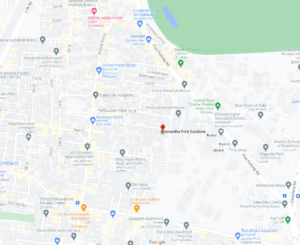Why Adapting labels for Different Environments Matters More Than Ever
Adapting labels for different environments is an often-overlooked but essential part of branding, packaging, and product delivery. In an era where consumer preferences, regulatory standards, and global market conditions continue to evolve rapidly, labels must be designed to perform under a variety of environmental stresses. Here, we’ll explore why adapting labels for diverse conditions matters more than ever, detailing key factors that underscore its importance and the benefits it offers.
- The Complexity of Modern Usage Scenarios
In today’s market, products aren’t confined to a single environment. They are transported, stored, and used across a broad spectrum of conditions, including extreme cold and heat, fluctuating humidity levels, and prolonged exposure to direct sunlight or water. For instance, consider a label on a bottle of sunscreen that spends hours under the blazing sun at the beach. If the label fades, peels, or becomes unreadable, the consumer may lose access to vital product information such as usage instructions and warnings.
Products used in industrial settings may be subjected to harsh chemicals, rough handling, or abrasive surfaces, and the labels must be robust enough to withstand these conditions without deteriorating. This applies to sectors like automotive, manufacturing, and logistics, where durable labels that resist oils, fuels, and friction are essential for the safe use and identification of parts. The failure of labels in these environments could result in significant operational risks, potential safety issues, and increased costs due to the need for replacements or maintenance.
- The Ever-Rising Consumer Expectations
Modern consumers have grown increasingly sophisticated in their demands, and they expect more than just a visually appealing label. They expect functionality, durability, and readability regardless of the conditions in which a product is used. This is especially true for products that are stored in areas prone to moisture, such as refrigerators, kitchens, or bathrooms. Labels on food containers, cleaning products, and toiletries must resist smearing, peeling, or losing their adhesive quality in these environments.
Meeting these expectations means that brands need to invest in high-quality label materials, printing technology, and adhesives that are specifically designed to perform in various conditions. When a product’s label fails to meet these expectations, it can negatively affect brand perception. Consumers associate the quality of a product with the quality of its packaging, including the label. If a label fails—becoming illegible or worn out—it can lead to questions about the product’s quality and reliability.
- Compliance with Regulatory Standards
Industries such as pharmaceuticals, food and beverage, and chemicals face strict regulations when it comes to labeling. Labels must not only display accurate and essential information but must also remain legible throughout the product’s life cycle, no matter the environmental conditions. For instance, in the pharmaceutical industry, labels often contain dosage instructions, active ingredients, expiration dates, and potential side effects. If these labels are not adapted to maintain integrity in various environments—such as humid bathrooms or cold storage—important information could become unreadable, posing health risks to consumers and legal risks to companies.
Non-compliance with these regulations can result in severe consequences, including product recalls, fines, and reputational damage. For instance, a food product that loses its label due to exposure to moisture could lead to consumer confusion over allergens or expiration dates. This kind of oversight not only jeopardizes consumer safety but can also lead to costly recalls and damage a brand’s reputation.
- The Push Towards Sustainability
Sustainability has become a key consideration for consumers and businesses alike. With the increased focus on environmental conservation and responsible consumption, brands are under pressure to choose eco-friendly packaging and labeling solutions. However, sustainable labels must also meet performance standards that ensure they can withstand different environmental conditions.
Choosing sustainable labels often means opting for materials that are recyclable, biodegradable, or made from renewable sources. Yet, these materials must be durable enough to maintain their integrity and functionality in varied settings. For example, plant-based or recycled materials may need additional coatings or specialized inks to endure humidity, UV exposure, or temperature changes without compromising legibility or adhesion.
Brands that manage to strike the balance between sustainability and performance set themselves apart in the market. This balance demonstrates to consumers that the brand is environmentally conscious without sacrificing quality. Additionally, the development of eco-friendly labels that can withstand tough environments encourages more sustainable packaging practices industry-wide.
- Globalized Supply Chains and Logistics
In a world where products are shipped across continents and through various climates, labels need to be more adaptable than ever. Items may be manufactured in a cold, controlled environment but transported through tropical regions or stored in fluctuating conditions. Such logistical challenges make label adaptability essential to ensure that products arrive at their destination with intact and readable labels.
The transportation of perishable goods or sensitive products, such as vaccines, further emphasizes the need for temperature-resistant labels. These products often require cold-chain logistics, where they are kept at specific temperatures to preserve their efficacy. If labels on such products do not endure the varying conditions of transit, crucial information could be lost, potentially impacting consumer safety and product compliance.
This adaptability isn’t limited to temperature resilience. Labels also need to maintain adhesion and legibility despite being handled multiple times, possibly coming into contact with rough surfaces or being exposed to high levels of friction. Ensuring that labels remain intact throughout the supply chain helps maintain a consistent brand image and prevents the need for re-labeling, which can be time-consuming and costly.
- Technological Innovations in Labeling
The good news for brands is that advancements in material science and printing technology have made it easier to create labels that are adaptable to various environmental conditions. Modern labels can be designed with specialized coatings, UV-resistant inks, and adhesives that respond to moisture or extreme temperatures. For instance, water-resistant labels are ideal for beverage containers or cleaning products, while UV-resistant inks help maintain color and legibility when exposed to sunlight.
One exciting innovation is temperature-sensitive labels that change color to indicate temperature fluctuations. These are particularly useful for products that need to be stored at certain temperatures, such as pharmaceuticals and food items. In addition, QR codes and NFC (near-field communication) technology embedded within labels provide consumers with a way to access additional product information or digital content without relying solely on printed text.
These technological solutions not only make labels more adaptable but also add value for consumers by enhancing their experience with the product. When brands incorporate smart labeling technologies that adapt to various environments, they gain a competitive edge in the market and foster stronger connections with tech-savvy consumers.
- Economic Benefits for Brands
Investing in adaptable label technology might seem like an added expense at first glance, but it often proves to be a cost-effective strategy in the long run. Durable labels reduce the need for replacements, minimize product returns due to unreadable or damaged labels, and decrease the risk of regulatory fines due to non-compliance. Additionally, brands that incorporate sustainable and adaptable labels are more appealing to consumers who are willing to pay a premium for products they perceive as higher quality and eco-friendly.
Moreover, when labels are designed to withstand different environments, they reduce the chances of product recalls. Recalls can be extremely costly and damaging to a brand’s reputation. By proactively designing labels to perform under all expected conditions, brands can protect their investments and maintain customer trust.
- Enhanced Brand Image and Loyalty
The effort put into creating labels that adapt to various conditions reflects a brand’s commitment to quality and consumer satisfaction. When a product’s label remains intact and legible despite exposure to challenging conditions, it sends a message to consumers: this brand cares about the details and the customer experience. In turn, consumers are more likely to trust the brand and remain loyal.
A well-executed label can also set a brand apart on crowded store shelves. Labels that look fresh and vibrant, even after being exposed to environmental stress, can attract more attention and convey a sense of reliability. When customers see that a label is resistant to fading, smearing, or peeling, it reinforces the perception of a high-quality product.
Conclusion
Adapting labels for different environments is no longer optional—it’s an essential aspect of modern product design and brand strategy. As the market continues to globalize and consumer expectations rise, brands must invest in creating labels that are durable, compliant, sustainable, and visually appealing under all conditions. From the logistics of global supply chains to the regulatory standards of specific industries, adaptable labels help protect brand integrity and ensure consumer safety.
Technological advancements in label materials, adhesives, and printing methods now allow brands to meet these high standards while also embracing eco-friendly practices. Ultimately, investing in adaptable labels offers significant benefits: compliance with regulations, reduced operational costs, enhanced brand perception, and increased consumer loyalty. Brands that prioritize this adaptability will be well-positioned to succeed in an increasingly complex and demanding marketplace.
Contact Details:
Address:
ANANDHA PRINT SOLUTIONS PVT LTD
32/2, First Floor,
Sathanipet 2nd Street,
Adj. Five Furlong Road,
Maduvinkarai, Guindy,
Chennai, Tamil Nadu,
India- 600 032.
Phone:
+91 98409 64267
Email:
info@aprints.in
sales@aprints.in
admin@aprints.in
accounts@aprints.in
design@aprints.in
Geo – Domestic State Supplies
Andhra Pradesh | Arunachal Pradesh | Assam | Bihar | Chhattisgarh | Goa | Gujarat | Haryana | Himachal Pradesh | Jharkhand | Karnataka | Kerala | Madhya Pradesh | Maharashtra | Manipur | Meghalaya | Mizoram | Nagaland | Odisha | Punjab | Rajasthan | Sikkim | Tamil Nadu | Telangana | Tripura | Uttarakhand | Uttar Pradesh | West Bengal
Geo – Domestic City Supplies
Chennai | Mumbai | Kolkatta | Delhi | Bengaluru | Hyderabad | Coimbatore | Thirchy | Madurai| Salem | Erode | Kanyakumari | Thanjavur | Tirunelveli | Vellore | Tiruppur | Kochi | Thiruvananthapuram | Kozhikode | Thrissur | Kollam | Tumkur | Mangalore | Mysore | Udupi | | Davangere | Dharwad | Hubli | Belgaum | Chitradurga | Karwar | Batkal | Visakhapatnam | Vijayawada | Nellore | Sri City (Tada) | Rajahmundry | Ongole | Tirupathi | Kakinada | Amaravathi | Guntur | Anantapur | Kadappa | Ahmedabad | Surat | Vadodra | Rajkot | Bhavnagar | Jamnagar | Jaipur | Jodhpur | Udaipur | Ajmer
International Supplies
Asia- Malaysia | Singapore | Japan | Korea | Thailand | Myanmar | Indonesia | Vietnam | Cambodia | SAARC- Srilanka | Bangladesh | Nepal | Bhutan | Afghanistan | Africa- Algeria | Ethiopia | Ghana | Nigeria | Uganda | Kenya | Tanzania | Uganda | Zambia | Zimbabwe | Egypt | Middle East- UAE | Kuwait | Qatar | Oman | Kingdom of Saudi Arabia | Bahrain | Jordan | Europe- United Kingdom | Germany | France | Switzerland | Italy | Spain | Portugal | Norway | America– United States Of – America | Canada | Mexico | Brazil | Argentina | Greenland | Other Countries – Russia | Australia






